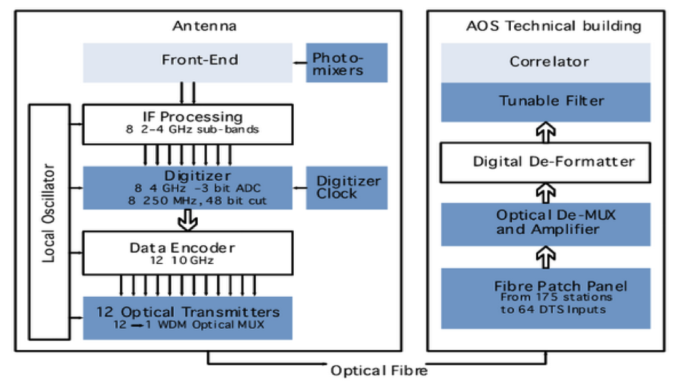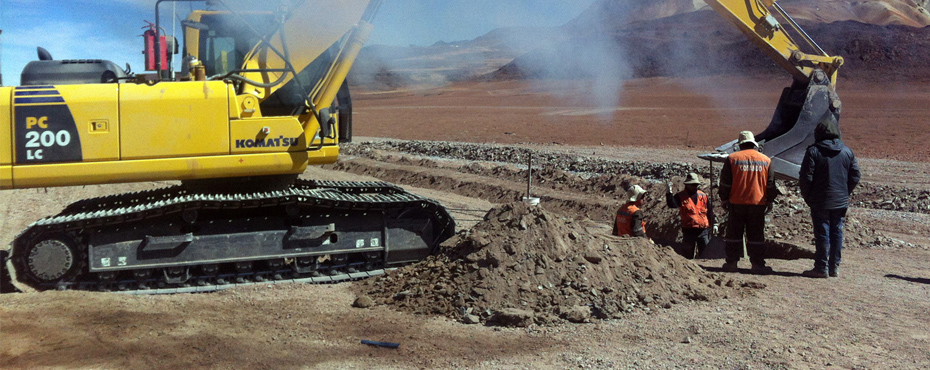Optic fiber
ALMA uses optic fiber for data transmission. It uses this to transmit not only astronomical data but also all kinds of observatory communications as well as the necessary processes for data reception from the antennas. This is also where the Local Oscillator (LO) flows through (see next chapter).
The fiber extends across the Atacama Desert, from each antenna base to the Correlator and from the OSF to the AOS. There are more than one thousand kilometers of optic fiber estimated to be installed for observatory operations.
Antenna foundations
The antennas are placed on concrete pads that are especially designed to guarantee their location and orientation. There are 192 triangular pads distributed across the Chajnantor Plateau. The antennas are affixed to the pads at three points located at the vertexes of each triangle.
These foundations are equipped with two vaults that contain the power source (electricity), the communication, the local oscillator (LO) and the data transmission wires that connect once the antenna is affixed to the pad.
Local oscillators (LO and LO2)
One of the most powerful processors in the world works at a maximum frequency of 5 GHz. However, the frequencies received by ALMA from the Universe start at 30 GHz and reach their maximum capacity at 950 GHz. Local oscillators are used to process these signals, which, under the Heterodyne Principle, reduce the frequency received from space to one that can be processed, in this case between 2 and 4 GHz. This is why ALMA has two oscillators for each antenna: one at the Front End and another at the Back End.

Diagram: ALMA signal processing and data transfer from the Front End to the Correlator.
